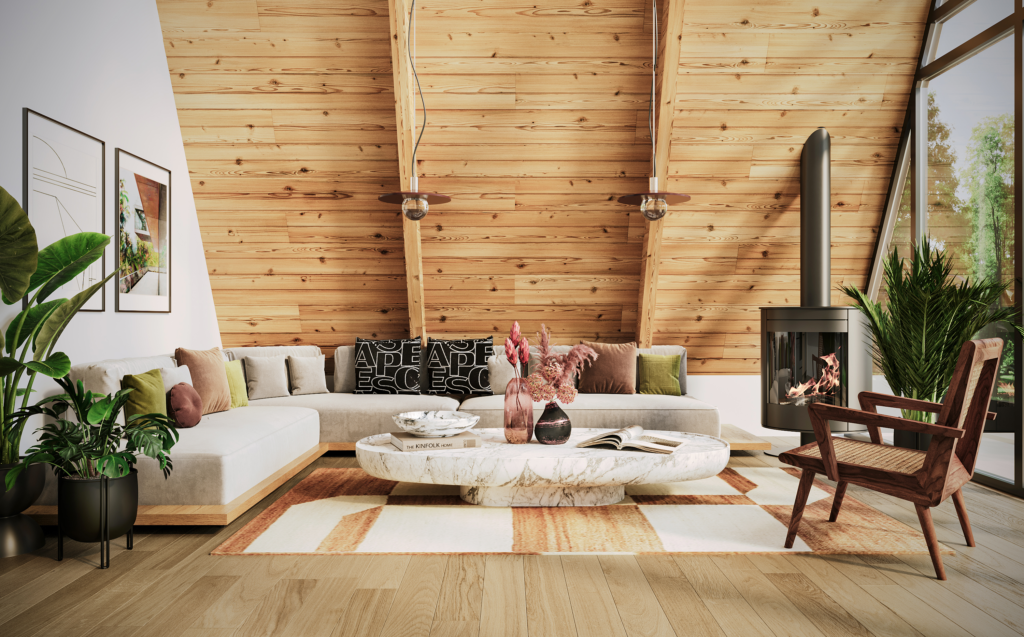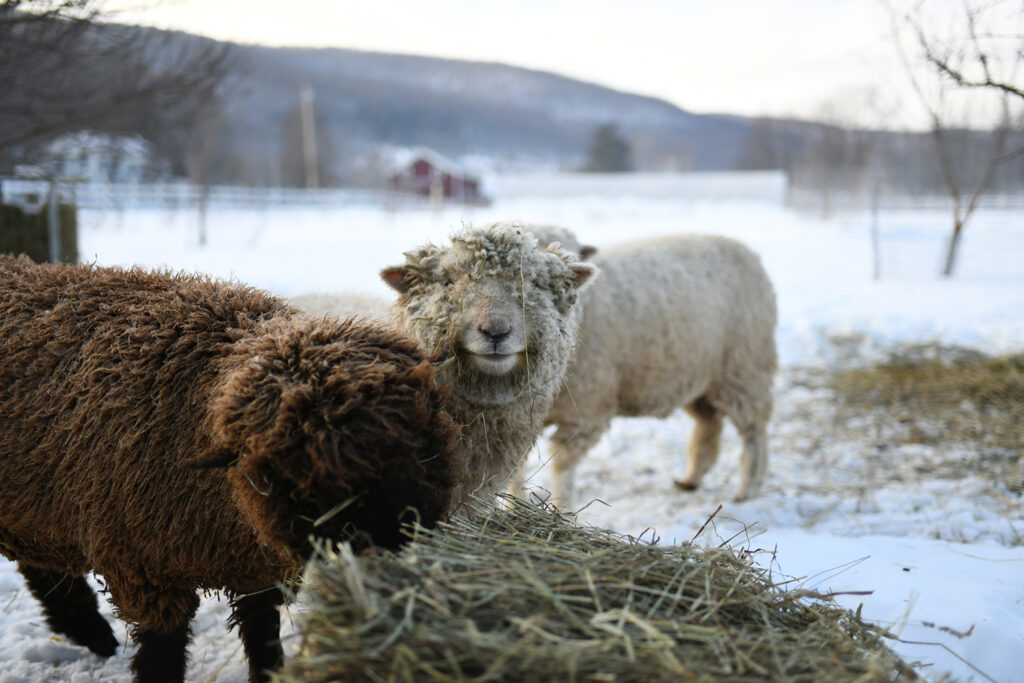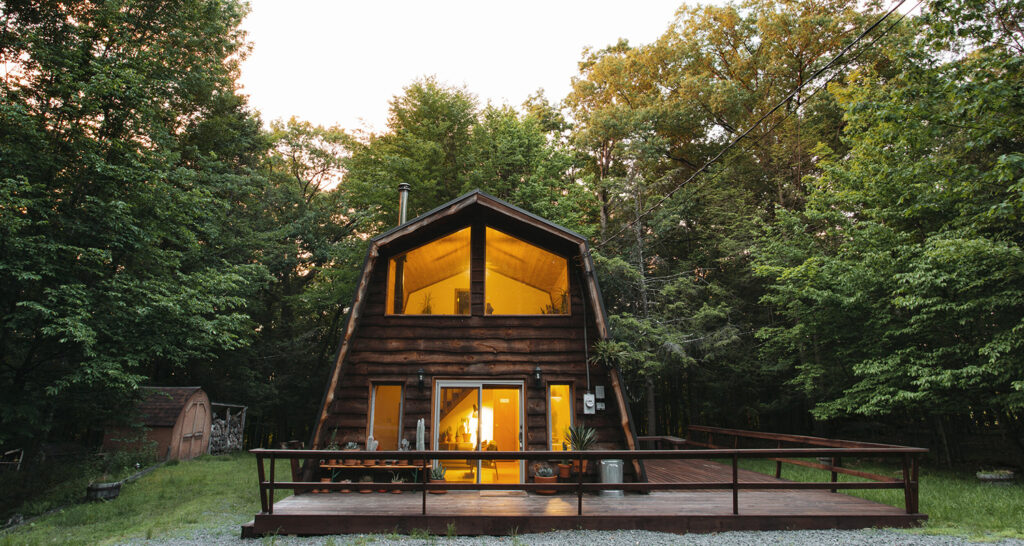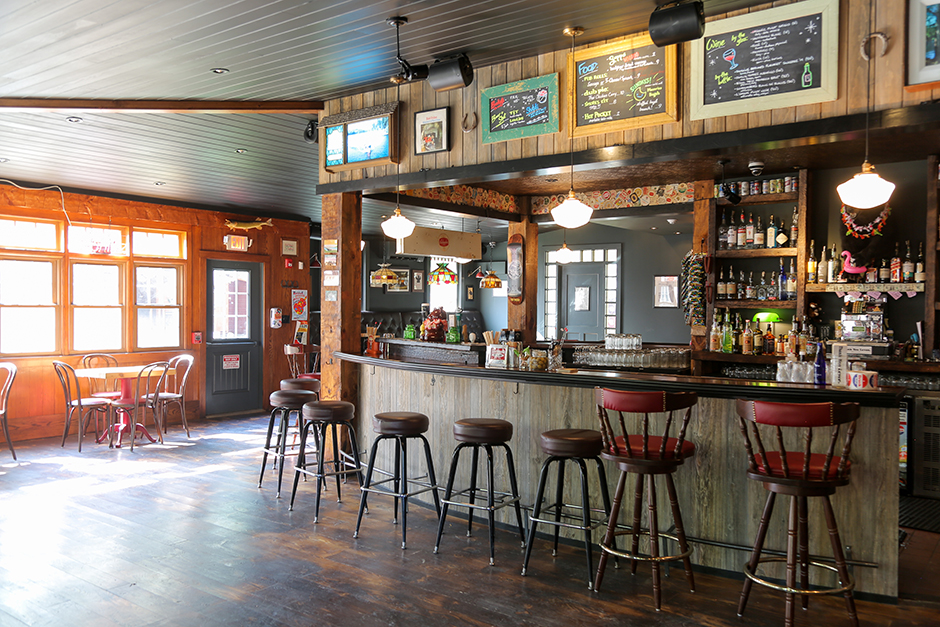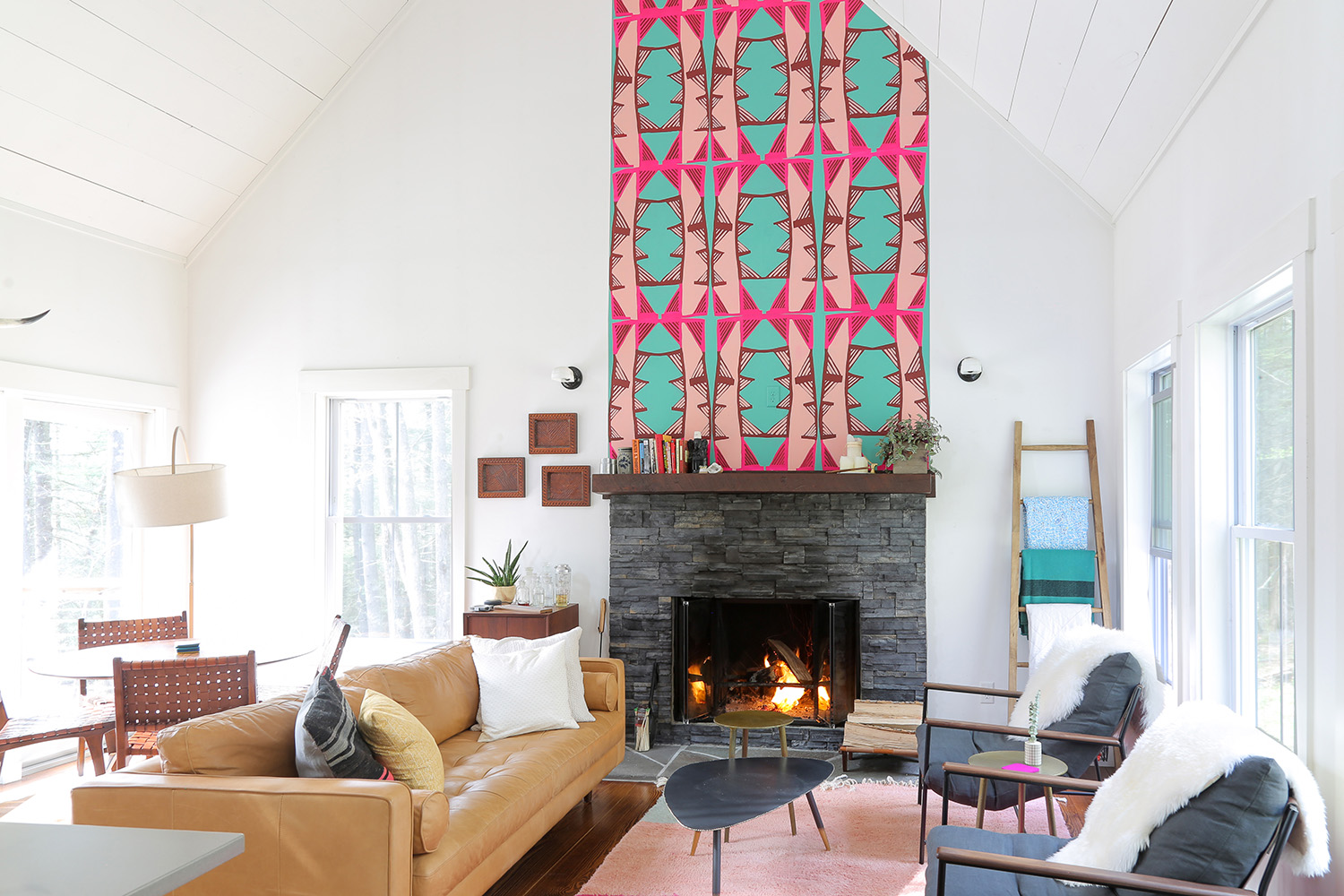
A Marcie Paper installation pictured for an Airbnb client in Narrowsburg, NY. Photo: Erin Lindsey/Escape Brooklyn.
In a time of blandly Insta-generic wall art, Marcie Paper’s patterned murals buck the trend.
The Hudson Valley painter layers and repeats abstract motifs—like delicate spindles and bulbous pear shapes—to mesmerizing effect, drawing inspiration from personal memories, vintage textiles, and her own small-scale paintings.
The results are absorbing, highly detailed works of art that reveal themselves the longer one looks. Below, Paper discusses her relationship to memory and meaning, painting and patternmaking, form and function—and why she loves living upstate.
Escape Brooklyn Design Editor Dana Drori interviews.
Did you always know that you wanted to be a painter?
I initially went to college for Art Therapy, but once I started taking painting classes I knew that it was what I wanted to pursue. I got degrees in both art therapy and painting but went on to study painting exclusively in graduate school.
How has your work evolved since completing your degrees?
My painting has remained fairly consistent. It is the thread that has connected all of my work. But my practice as a whole has changed and broadened to include other mediums as well as a focus on design.
You’ve noted how your abstract paintings investigate the nature of short-term memory. Can you tell me more about that?
My interest in memory was triggered by my personal experience with memory loss. Twenty years ago my father was diagnosed with a rare genetic disorder that left him without the ability to retain short-term memories. My paintings stem from the questions that have persisted: when do our daily experiences transform into our recollections of the past? How much of our long-term memory is a sum of small insignificant events? And ultimately, what is the impact of memory on our concept of ourselves and our placement within the world?
I collect, abstract, and then layer the details of my daily life into my paintings. This is with the goal of preserving and learning from these memories that may have been lost otherwise.
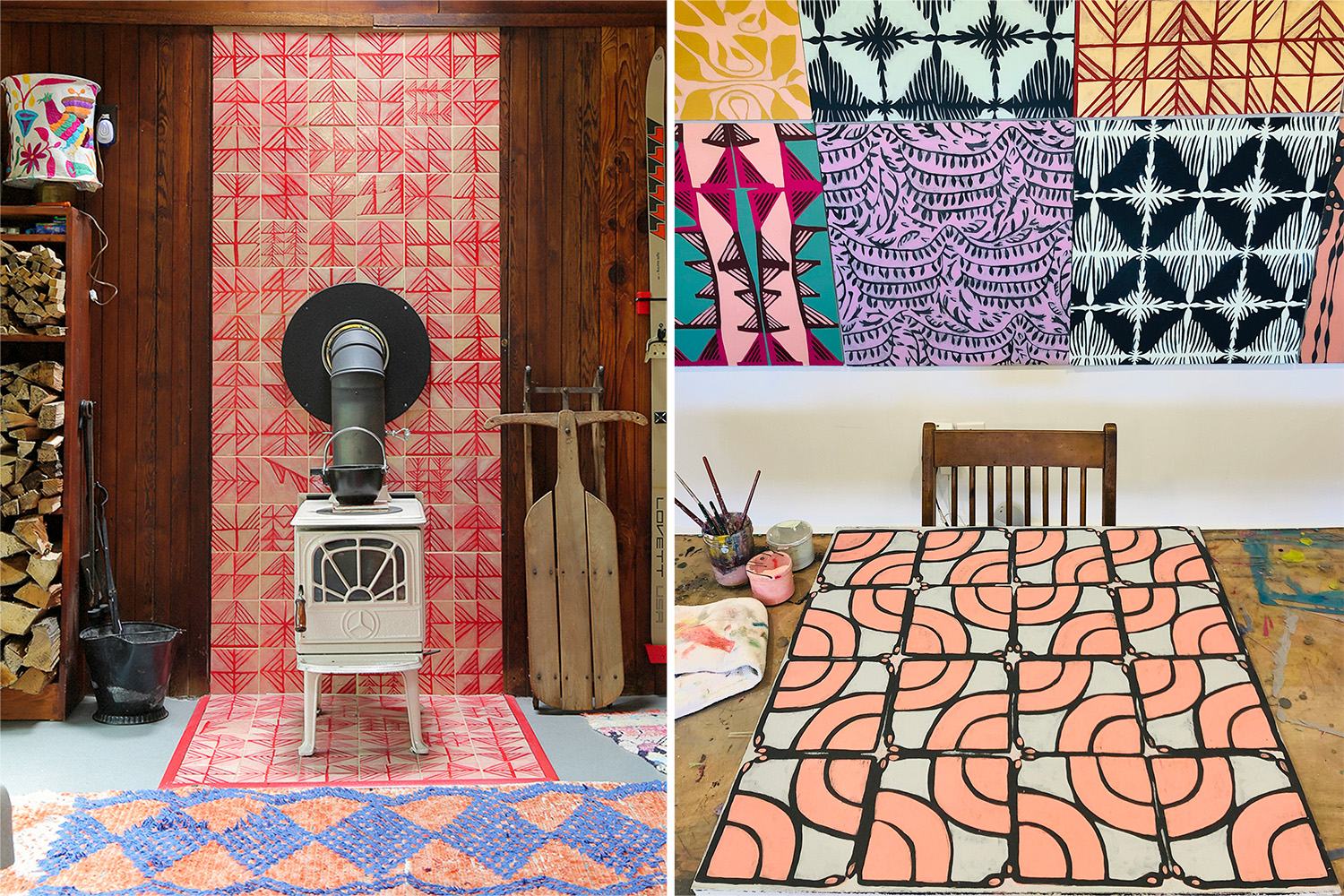
Left: Hand-painted tiles adorn the wall behind a wood stove in Paper’s former cabin. Right: a glimpse into the studio.
Your work runs the gamut in terms of size—from small paintings to large installations. How do you move between them? Do you have a specific process for scaling large installations? How do the interiors inform what you make?
These days I tend to make either small abstract paintings or large-scale patterned wall murals. The patterns almost always originate from the small paintings. I find that once I have translated a painting into a pattern the possibilities of scale are almost infinite! But yes, the space dictates a lot of the outcome and I work closely with clients to find the best resolution.
How do you work with clients to come up with patterns?
Generally speaking, patterns are chosen by clients from my pre-designed catalogue of patterns and are then customized with color, scale and composition to fit a client’s unique space and to address any budgetary parameters. There is also an option to create a new pattern based upon a client’s home or other personal subject matter. In that case, I work closely with clients to develop a pattern that will not be used again and is 100% their own. In both cases, there is a close back-and-forth that ends only when we are both feeling good about moving forward. I retain a large degree of artistic license and would not complete a wall or project that isn’t true to myself. At the end of the day, I consider all of my walls to be my own unique works of art.
Do you take on other custom projects for clients?
In addition to hand painted walls, stairs, and tiles, I have also made commissioned paintings based upon a client’s memories. This is a fairly new direction for me, but I’ve found it to be a really exciting one!
How did you get into commission-based work, painting walls or tiles or stairs for interiors?
I started years ago with my own apartment in Brooklyn. I realized how much I loved the process and its ability to transform a space using simple materials. I then asked friends if I could paint their walls! I offered them free wall paintings in exchange for creative freedom. This gave me a jumping off point to start offering commission-based work which is now my favorite thing to do!
You work with myriad media, including textile printing, and painting ceramics. What is it like bringing your work to new forms? When function plays a role in the work, what changes?
For a number of years we had a small cabin near Livingston Manor. We were installing a wood stove and needed tile to surround it. I searched but couldn’t find anything that was just right, so I started glazing tiles! The function caused the end product, and function has pushed me in other directions as well. My husband (a furniture maker) and I had a plan to open an inn and make everything in it, which propelled my work for a long time. It is the reason I started making block-printed textiles, pillows, tufting rugs, and weaving. Ultimately, we let that dream go, but I’ve certainly learned a lot in the process.
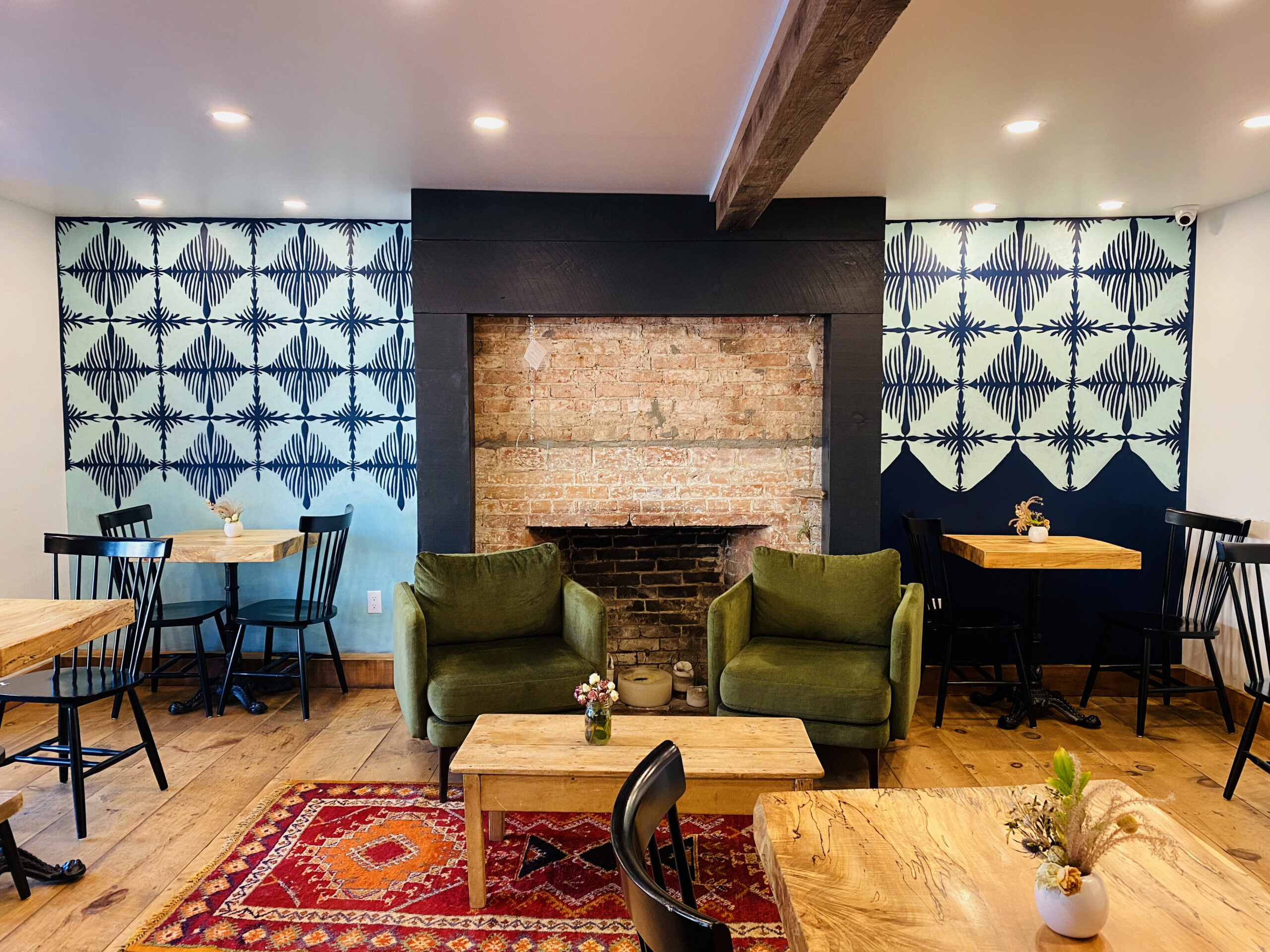
Inverted patterns create this playful mural at Josie’s Coffee Shoppe in Saugerties, NY.
Geometric figures and repetition feature heavily in your work. Can you talk about what those forms mean to you, and what they’re inspired by? How do you begin your process for discovering repeated patterns?
Most everything that I make starts with a daily painting. These are paintings that are made within one day and are meant to capture some details, however insignificant, of that specific day. Often they are architectural or based in nature, and sometimes they are more conceptual. They could be anything, from a window dressing or a tree seen on a walk, to a headache or a phone conversation. All of these moments then take the form of an abstract symbol that can be repeated. Once the paintings are complete I often pick them apart for content to use in patterns or on rugs or tiles.
Who and what have been major influences on your work?
Allan McCollum, Louise Bourgeois, Thomas Nozkowski, Anna Zemankova, Hilma Af Klint, Hundertwasser. Quilts, textiles, samplers, antiques, flea markets, patterns of all kinds, vintage fashion.
Do you have any personal rituals that are part of your artistic process?
It’s not very unique I suppose, but I use a sketchbook. Before I paint, I always write the date and then make a list of words or phrases that capture the day for me. Then use the page to work out abstract symbols taken from that list.
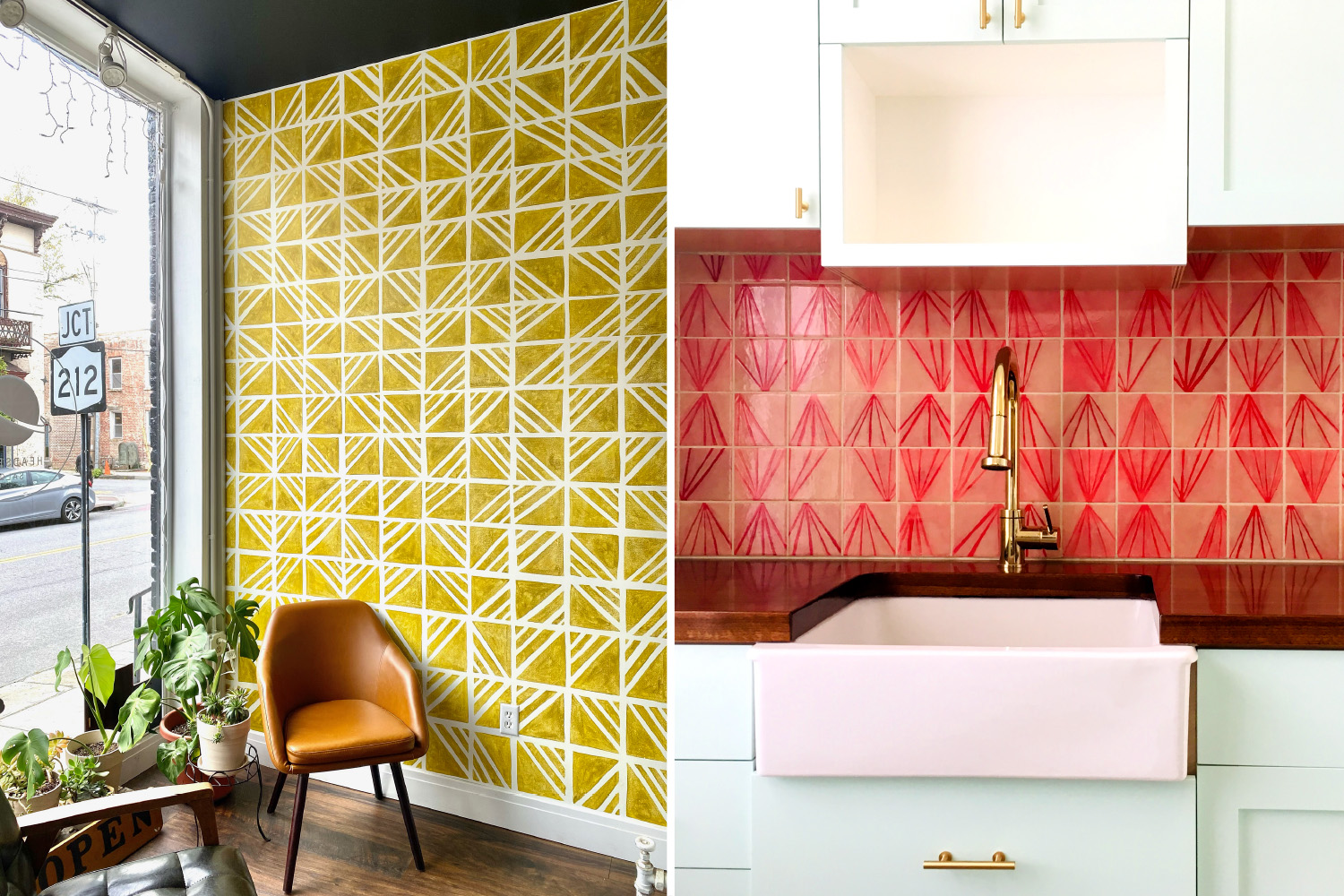
Left: Commission by Headspace Salon in Saugerties, NY. Right: a collaboration with husband Sean, @nuvowoodworking, in Sunset Park Brooklyn.
What made you move upstate?
At first I believe it was general city-fatigue, but we were only upstate part-time then. When we made the full-time move after the birth of our second child it was, as I mentioned before, with a plan to open an inn. When that plan got sidelined we relocated again but stayed upstate. We were addicted to the space and time afforded by living here, and of course the proximity to green. I still go back to the city on a weekly basis though so I can appreciate the balance.
Do you feel like you have a community of artists up here? If so, any people up here you draw inspiration from?
Yes! And I feel it growing every day. I have recently linked up with Jennifer Salvemini of Hinterland; a cooperative of women artists and makers outside of Woodstock. I’m thrilled to be a part of what she is doing there and can’t wait to watch it grow.
What are your favorite upstate places to visit? Either for inspiration, or for personal enjoyment?
We love Art Omi, Dia Beacon, Storm King and Opus 40. And if you are a fan of vintage clothing you have to check out the recently opened Chamber’s Vintage in Saugerties.

